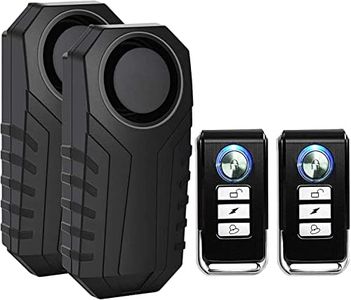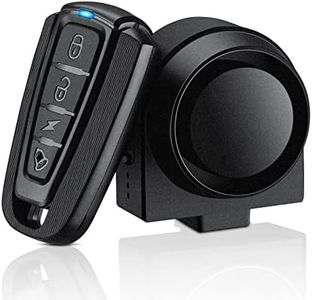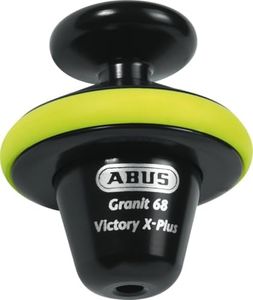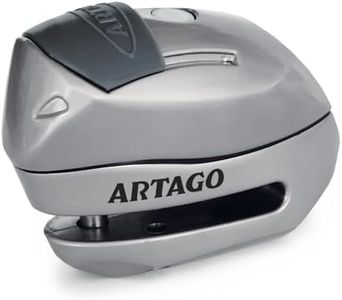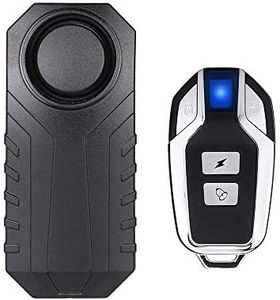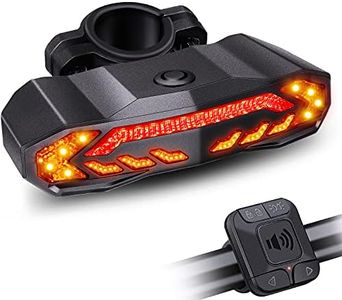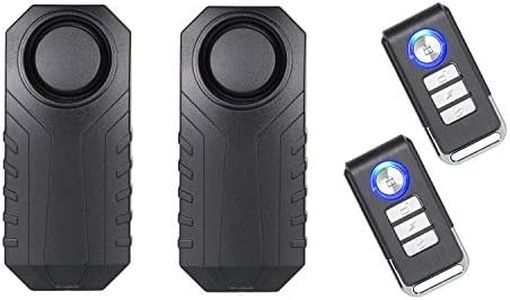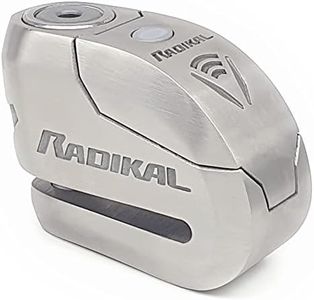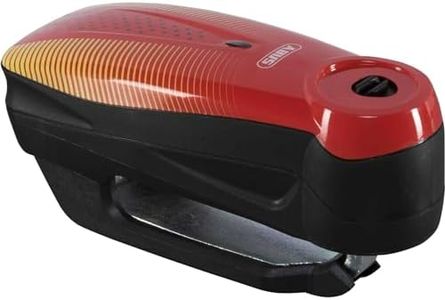We Use CookiesWe use cookies to enhance the security, performance,
functionality and for analytical and promotional activities. By continuing to browse this site you
are agreeing to our privacy policy
10 Best Bike Alarms
From leading brands and best sellers available on the web.Buying Guide for the Best Bike Alarms
Choosing the right bike alarm is essential for protecting your bicycle from theft. With so many types and features available, understanding which alarm fits your needs will help you feel secure when leaving your bike unattended. When comparing bike alarms, consider where and how you use your bike, as well as how much attention you want an alarm to attract in case of tampering. The following key specs will help guide you in selecting the best bike alarm for your situation.Alarm Volume (Decibels)Alarm volume measures how loud the alarm is when triggered, usually in decibels (dB). This is important because a louder alarm will draw more attention, which can scare off thieves and alert people nearby. Alarm volumes typically range from around 90 dB (as loud as heavy city traffic) to over 120 dB (comparable to a rock concert). If you are leaving your bike in a busy public area, a higher volume may help more. For quieter streets or residential zones where you don’t want to disturb neighbors unnecessarily, a moderate volume might be enough.
SensitivitySensitivity describes how easily the alarm is triggered by movement or vibration. High sensitivity responds to even small disturbances, while lower sensitivity requires more forceful tampering to set off the alert. Some alarms allow you to adjust sensitivity. If your bike is in an area with lots of bumping or passing traffic, choosing a lower sensitivity avoids false alarms. If it’s parked somewhere quiet, higher sensitivity ensures any tampering is noticed.
Power Source (Battery Type and Life)Most bike alarms run on batteries, either standard replaceable ones (like AA or CR2032) or rechargeable batteries via USB. Battery life varies—some last only weeks, others several months. Longer battery life means less maintenance, which matters if you leave your bike parked for days at a time. Rechargeable batteries are convenient if you often have access to charging, while replaceable batteries can be handy if you need a quick swap.
Installation MethodThe way an alarm attaches to your bike affects both its security and ease of use. Some alarms strap or clamp onto your frame, while others replace existing components like seat clamps or bottle cages. More secure attachment makes it harder for thieves to remove the alarm, but might be trickier to install. If you want a quick and temporary solution, pick a strap-on style; for long-term protection, consider something more integrated and tamper-resistant.
Alert FeaturesAlert features refer to additional ways the alarm can notify you or deter theft. Some alarms sound only locally, while others send notifications to your phone via Bluetooth, or even use GPS to track your bike. If you park your bike nearby and can hear the alarm, a simple siren might be enough. If you leave your bike out of earshot or in high-risk areas, smart alarms that connect to your phone provide extra reassurance.
Weather ResistanceYou want an alarm that keeps working even if it gets wet or dusty. Weather resistance means the alarm can handle rain, humidity, or dirt without damage. If your bike will be stored outdoors or ridden in all weather conditions, look for an alarm with strong weatherproofing. For bikes kept indoors, weather resistance is less of a concern.





